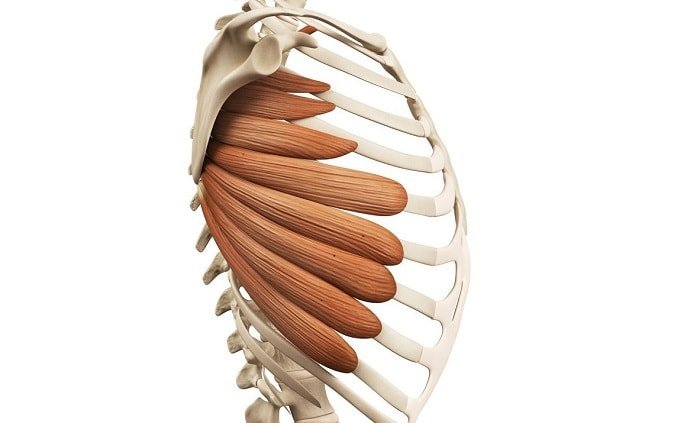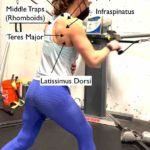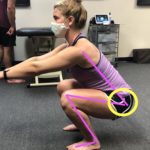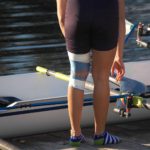What is the Serratus Anterior?
What muscle is this? Have you heard of it? It plays a huge part in both the control of and movement of your shoulder blade and is involved in that ‘connection’ feeling that all rowers look for from the catch through the drive. Your serratus anterior main actions are to bring your shoulder blade around your ribs as your arms reach forward. It also contributes to the overall position of your shoulder blade. The muscle sneaks from the underside of the shoulder blade to your ribs, attaching like fingers along your ribs to pull the shoulder blade around and forward.
How it relates to your Rowing Stroke:
I remember through college, I mostly thought of my Lats as my big connector muscles, and they definitely play a role, but once I started to try and figure out how to stop having shoulder and rib pain, working on activation and mobility of the serratus anterior seemed like it played an important role. Now keeping in mind, a strong rotator cuff allows the serratus to do its job most efficiently. This muscle helps you bring your shoulder blade around your rib cage, which we all look to do at the catch, especially in sweep rowing for the outboard arm. Imagine, reaching the catch and having your shoulder blades stuck on your back, you would be missing some valuable water OR conversely when your shoulder blades are not strongly connects to your torso making it hard to feel their position creating less connection to the handle as you initiate the drive.
When you are rowing into a head wind, you might really feel this muscle working hard. The extra intentional press you need to get your handle out and to come up the slide is assisted by your serratus. You really might feel this if you are rowing on the square on a windy day. I remember last year in the weeks leading up to Head of the Charles, it was very windy in Boston. I think every rower I worked with during that time had tight serratus anterior muscles from needing to stabilize and work through all the wind.
Injuries related to the Serratus Anterior:
Another important point with serratus anterior strengthening is, a weak serratus will feel and get tight. Remember, this muscle attaches to the ribs like fingers around the side, a tight muscle over your ribs can cause pain through your side. This can feel like bad rib pain. A tight serratus in some instances, for example in higher level (collegiate and elite rowers) could be thought of as a warning sign of possible rib injury to come. These groups have the highest frequency of rib injury because of the training volume and force generated. That said, the ribs can be overloaded with force or stress because the structures around them are not strong enough to continue doing their job. The serratus anterior is one of those structures, keeping it strong and loose are two keys to using the serratus to protect your ribs.
The take home message: use your serratus and bring those shoulder blades around your ribs to get your hands up and out safely and with good connection
How do work on my Serratus Anterior:
This can be a difficult muscle to feel correctly when you try and isolate it. Here are three different options of ways to work on it. The serratus hug and supine punch can be thought of as a similar level of difficulty. The main goal is to use one or both of them to start to tune in and feel your serratus working, feel your shoulder blade being brought around your ribs. Second once you get it and want to really start adding strength and connecting it in with some core stability, try the serratus push up. Give these a go and see how your shoulders feel!
Exercises that focus on the Serratus Anterior:
Bonus Thoughts: The Serratus Anterior's Role in Breathing
Your serratus anterior also plays an accessory role to breathing, it helps to elevate your ribs. Now overall breathing is something we will talk a lot about because no one can have ideal breathing when you’re rowing, so it can place stresses on your body in different ways and possibly contribute to injuries. Sticking to thinking of your serratus as it relates to your rowing stroke, when you are rowing hard, moderate pace to a race pace, you need more than just your diaphragm and resting breathing strategies to pump enough air in and out of your lungs to fuel your muscles. Your serratus can help elevate your ribs with inspiration, however if the muscle is too weak, when it’s being asked to both help bring your shoulder blade forward to the catch and asked to help you breathe, likely what will happen is it will tighten up. Trying to give you the stability you’re looking for to continue to perform your rowing stroke. Now this can come and go and improve if you give yourself the appropriate recovery, but we will also go through so good self release techniques for the serratus so that you don’t scare yourself thinking you have injured your ribs, when really it’s your serratus being tight.







